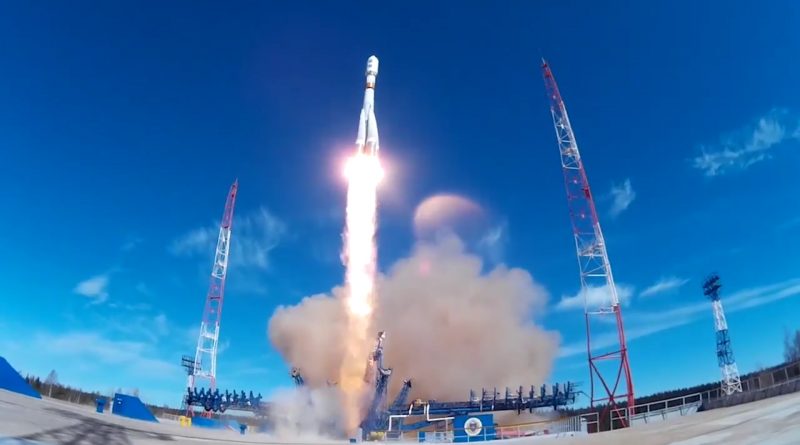Russia’s Soyuz launches EKS Missile Warning Satellite, ends Year-Long Military Launch Gap
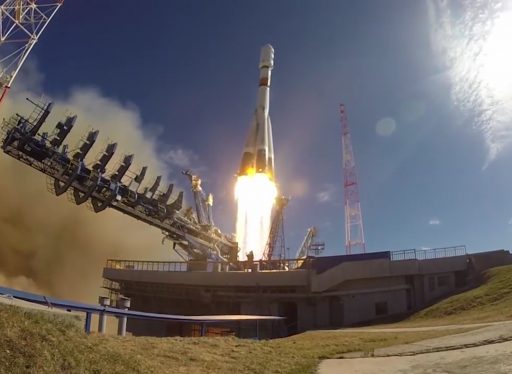
The rumble of rocket launches returned to Russia’s Plesetsk Cosmodrome on Thursday when a Soyuz 2-1B rocket blasted off from the site’s 43/4 complex with the second EKS missile warning satellite operated by the Russian armed forces. It was the first launch from the military launch base since June 2016 and also ended a general lull in Russian satellite launch activity.
Topped with the second Tundra satellite, Soyuz blasted off at 6:34 UTC on Thursday on a multi-hour mission into a highly elliptical orbit from where the satellites can keep watch over the Northern Hemisphere and provide advance warning of any missile activity. Soyuz was in operation for nine and a half minutes to dispatch its Fregat-M upper stage into a sub-orbital trajectory for a three-burn mission aiming for what is known as a Molniya orbit.
Spacecraft separation was confirmed around five hours after launch into a highly elliptical orbit peaking around 38,500 Kilometers in altitude. The EKS No. 2 satellite has been named Kosmos-2518 in Russia’s numbering system of military spacecraft.
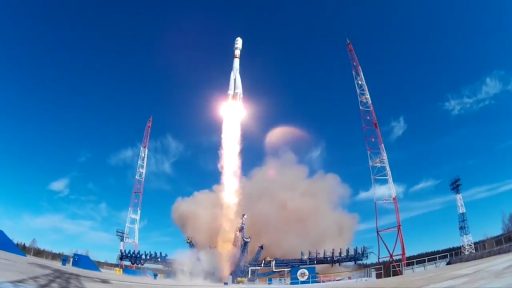
Thursday’s launch was the first non-ISS launch from a Russian Cosmodrome in nearly a year. The most recent Russian-operated launch not in support of the International Space Station occurred back on June 9, 2016 when a Proton rocket had a close call lifting the Intelsat -31 communications satellite into orbit. Since then, Russia’s Baikonur Cosmodrome supported seven Soyuz launches with crew and cargo to the International Space Station, though one of those crew missions failed to reach orbit, and Arianespace-operated Soyuz rockets completed a pair of successful Geotransfer missions in 2017.
A yearlong gap in military launches has been unprecedented in Russia’s spaceflight history. Its causes vary from persistent budget struggles, reliability concerns and manufacturing problems that affected both of Russia’s workhorse rocket families in the last twelve months – leading to a significant drop in Russia’s launch rate, typically in a leading position among space-faring nations.
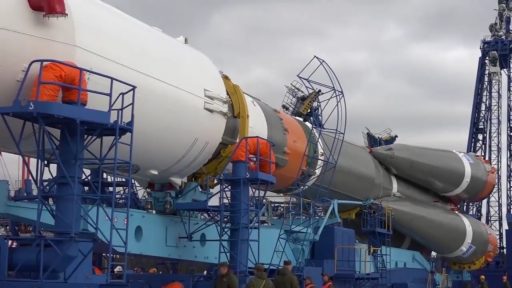
Coming almost exactly one year after the most recent mission from Site 43/4 at Plesetsk, Thursday’s Soyuz launch carried the EKS No. 2 missile warning satellite as Russia aims to establish a six-satellite constellation by 2020 to close a gap in space-based missile detection created by the program’s predecessor running out of service before the Tundra satellites were ready for launch.
Russia’s previous generation of missile warning satellites, known as Oko, were considered “seriously out of date” when that program’s final satellite entered Geostationary Orbit in 2012, using antiquated sensor technology from the 1970s. Under Oko, US-K satellites operated in highly elliptical Molniya orbits to cover the high-latitude regions and US-KMO spacecraft in Geostationary Orbits to provide global coverage. A total of 101 satellites were launched under that program and the final Oko suffered a critical power failure in 2014 – eliminating Russia’s space-based missile warning capability.
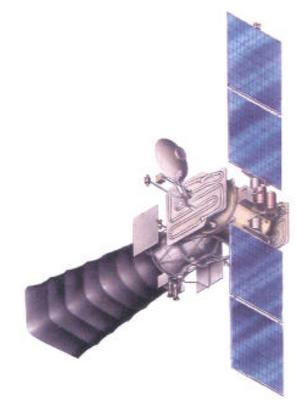
The EKS program, also known as the Unified Space System, was initiated at the turn of the century with the goal of being ready for launch by 2007 with several years of overlap between the legacy satellites and their successors. Lawsuits were filed between the Russian Ministry of Defence and satellite manufacturer Energia for a compensation for the continuing delays, however, Energia argued that ever changing specifications and technical modifications beyond what was possible in the industry slowed down their progress.
Energia won the case, but the launch of the first EKS satellite kept slipping from a realigned 2012 target. EKS No. 1 lifted off from Plesetsk on November 17, 2015 as the first of six planned EKS satellites to build an orbital constellation ensuring the entire Northern Hemisphere remains under constant surveillance for missile activity. Russia hopes to have the fully operational constellation in orbit by 2020.
Technical details on the EKS satellites are not available given the military nature of the program, but there are strong indications the satellites are using Energia’s Universal Satellite Platform that weighs 1,200 Kilograms and can support payloads of up to one metric ton. The EKS infrared sensing payload is built by TsNII Kometa that also provided the Oko early warning payload systems. The US-KMO satellites used to carry a 1-meter diameter infrared telescope outfitted with a deployable 4.5-meter long sunshade.

The satellites are capable of detecting the infrared signature caused by the hot exhaust of a missile to deliver early warning and tracking information for targeting of a defence strike. A key improvement over Oko is the ability to track a missile’s path not just the missile launch itself, allowing a faster warning time for potential targets.
Aerospace Defence Force officials noted that the EKS system not only can detect intercontinental ballistic missiles but also tactical theater and tactical missiles – putting it on-par with the American SBIRS satellites that can also detect the entire range from large ICBMs to short-range theater missiles.
Reportedly, the EKS satellites also carry an ultra-robust secure communications package that can be used in case of a nuclear war.
The program’s code name ‘Tundra’ initially indicated the satellites would be operated from Tundra orbits – a type of Geosynchronous Orbit optimized for coverage of high-latitude regions by placing the satellite into an elliptical 24-hour orbit with the high-point over the Northern Hemisphere where the craft would dwell for the majority of the day. However, as shown by the 2015 EKS launch, the satellites operate from a 12-hour Molniya orbit that also dwells over the northern regions but requires more satellites to achieve continuous coverage.
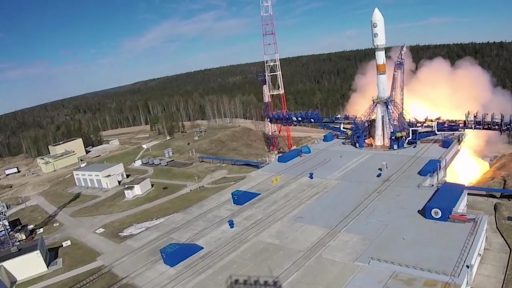
Thursday’s launch was carried out in the relative secrecy provided by the remote Plesetsk Cosmodrome, located around 500 Kilometers north of Moscow. No details on launch preparations were available aside from social media photos of the rocket’s rollout on Tuesday and navigational warnings that confirmed the date and time for the mission.
Soyuz headed through an eight-hour countdown operation in the overnight hours, starting with the activation of the rocket for detailed checkouts before the State Commission met to give the green light to load the rocket with 274 metric tons of Liquid Oxygen and Kerosene over the course of a two-hour sequence picking up at T-4 hours. The 46-meter tall rocket was revealed when the Service Structure halves retracted in the last hour of the countdown before the countdown switched into automatic mode at the T-6-minute mark.
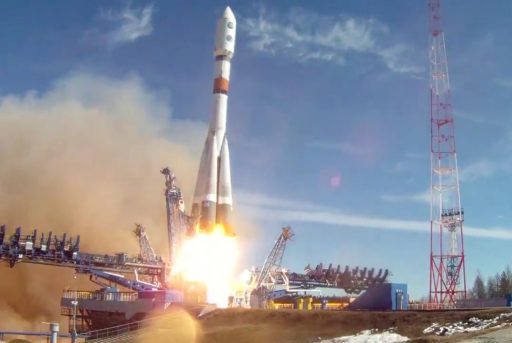
The terminal countdown sequence included the pressurization of the 12 propellant tanks aboard the vehicle, the purge of the engines with gaseous nitrogen to ensure a clean ignition, and the transfer of the vehicle to internal power. With one minute on the countdown clock, Soyuz assumed control over the final critical steps leading up to ignition of the RD-107A engines on the four strap-on boosters and the core’s RD-108A to rumble to a collective liftoff thrust of 422 metric-ton-force.
Overcoming counterweights, Soyuz took flight at 6:34 UTC and balanced in a vertical position for the first few seconds before starting its pitch and roll maneuver to start flying south-east to head to an orbital inclination of 63.4 degrees – a sweet spot in Earth’s uneven gravitational field where a satellite’s low and high points can remain constant over an extended period of time without corrective maneuvers.

Burning 1,600 Kilograms of propellant per second, Soyuz pushed through the sound barrier and passed Maximum Dynamic Pressure on its way through the dense layers of the atmosphere. The four boosters – tasked with accelerating the rocket to over 1.5km/s – finished their job one minute and 58 seconds into the mission after each burned 39,600kg of propellant. Jettisoned by pyrotechnics and pushed outward, the 19.6-meter long boosters dropped away from the still-firing core that now relied only on its 102,000kgf engine to push Soyuz toward orbit.
Consuming over 90 metric tons of propellant, the core stage fired until T+4 minutes and 45 seconds followed two seconds later by the simultaneous ignition of the RD-0124-powered third stage and firing separation charges to push the 27.8-meter long core stage away and toward a destructive re-entry.
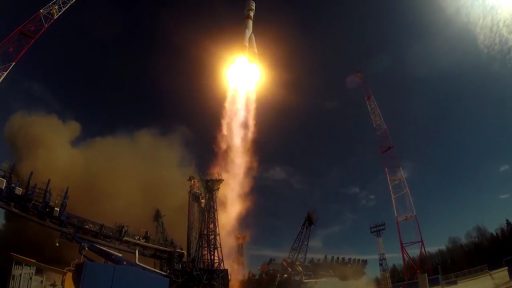
Generating a vacuum thrust of 30 metric-ton-force, the modified Block I third stage was to consume 25 metric tons of propellant over the course of a four-and-a-half-minute burn. Soyuz delivered a smooth ride to the Fregat upper stage and its payload, sending the upper composite on its way nine and a half minutes after liftoff on a sub-orbital trajectory.
Fregat uses storable propellants – Unsymmetrical Dimethylhydrazine and Nitrogen Tetroxide that are consumed by a re-startable S5.92 engine delivering up to two metric tons of thrust. Fregat-M measures 3.35 meters in diameter and is 1.5 meters long weighing 6,700 Kilograms including 5,750 Kilograms of storable propellants.
Fregat was tasked with a three-burn mission on Thursday – an initial burn to enter a Low Earth Parking Orbit before a brief period of coasting to reach the appropriate position in its orbit to set up the targeted orbital parameters with respect to argument of perigee, leading to the placement of the position of the orbit’s apogee.
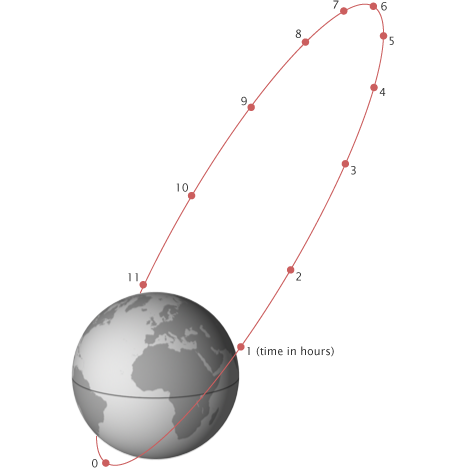
The second burn – the longest of the mission – aimed for a highly elliptical transfer orbit and set up for a multi-hour coast phase to allow the third burn to occur closer to the apogee of the orbit to raise the perigee.
EKS No. 1 was injected into an orbit of 1,630 by 38,550 Kilometers at an inclination of 63.8 degrees with an argument of perigee at 270 degrees, meaning the satellite would reach its peak altitude over the Northern Hemisphere.
In order to achieve a continuous coverage over the northern hemisphere, at least three spacecraft in Molniya orbits are required with appropriate spacing in between. The major benefit of a Molniya orbit despite being less energetic than GEO is the coverage of the polar regions which is in many cases not possible from Geosynchronous Orbit due to low elevation angles.
At least six Tundra satellites are ordered for launch until 2020 to establish a fully functional, global constellation of Missile Early Warning Satellites, ending Russia’s reliance on ground-based missile detection systems that are limited in range and only provide a fraction of the warning time satellites can deliver.

